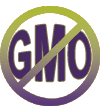Hard Choice on Biotech Corn Awaits Vilsack
By Philip Brasher
DesMoines Register
February 15, 2009
A new gene-altered corn promises to make fuel ethanol greener and cheaper. The corn, developed by Syngenta AG, requires less energy and water to turn into ethanol, and theoretically can produce more ethanol per bushel.
But the prospect of this designer corn going on the market as soon as next year is giving the food industry indigestion. The grain is engineered to contain a special enzyme that turns cornstarch into the sugar that's used to make ethanol. Syngenta says it will take less heat and water to make a gallon of ethanol using the biotech corn.
Government officials say the corn is safe for human consumption. But companies that turn cornstarch into food ingredients aren't so keen on corn that converts its own starch into sugar.
Syngenta is pledging to ensure that the corn is grown and stored separate from other types of corn and sold only to ethanol plants. But the food processors fear the Syngenta corn could still get into their grain supplies inadvertently. They've asked the USDA to delay approving the Syngenta corn.
The government lacks "adequate scientific data or documentation necessary" to evaluate the crop's impact on food and feed products, according to a letter to the USDA from trade groups representing food industry giants such as General Mills, ConAgra and Archer Daniels Midland.
The issue will present the new agriculture secretary, Tom Vilsack, with the first test of how tightly he will regulate agricultural biotechnology. Vilsack was a strong supporter of the industry when he was governor of Iowa - the biotech industry's chief trade organization once named him its governor of the year.
Vilsack's decision will be "particularly interesting since some segments of the food industry are opposed" to the corn, said Jane Rissler, who follows agricultural biotechnology for the Union of Concerned Scientists. Her group wants the USDA to ban the outdoor production of crops engineered for production of industrial or pharmaceutical substances. "It is not a good precedent to approve a crop like this," she said.
Syngenta competitor Pioneer Hi-Bred has taken a more conventional approach to aiding ethanol producers: Pioneer is working to increase the starch content of the kernels.
Two federal agencies have oversight responsibilities for Syngenta's product - the USDA and the FDA. The FDA considers whether a crop is safe for human consumption and decided that it was after reviewing Syngenta's data. The USDA had to determine whether the crop could be a "plant pest," a threat to other plants and the environment, and concluded that it wasn't.
Now, a conventional ethanol producer buys a liquid version of the enzyme, known as amylase, mixes it with grain and water and heats the resulting slurry so that it can be fermented into alcohol.
Steve McNinch, who has experimented with the Syngenta product for more than a year at the ethanol plant he runs in Oakley, Kan., says the corn enzyme is more effective. Less heat is needed, cutting energy costs by 10 percent a gallon, and the slurry is thinner, which means the plant can increase its alcohol output.
Before using the Syngenta corn as its enzyme source, the Western Plains Energy plant could produce 46 million to 47 million gallons a year. Now it's putting out 50 million, McNinch said. "I wouldn't want to run my plant the way we used to," he said.
Lowering the plant's natural gas bill could yield a benefit beyond cutting production costs: Ethanol made using less energy would show a greater reduction in greenhouse gas emissions. That could be important in qualifying for federal or state low-carbon rules.
The nation's leading ethanol producer, Poet LLC, sees yet another reason to get the Syngenta product on the market beyond its impact on existing facilities. The company told the USDA that designing crops like Syngenta's that can produce their own enzymes could speed the development of next-generation biofuels, which would be made from grasses, wood and other sources of plant cellulose, which is much harder to convert to sugar than cornstarch.
So Vilsack's choice appears pretty stark: food or fuel. He has to pick between the food and ethanol industries.
It won't be the last time he has to make that choice.

